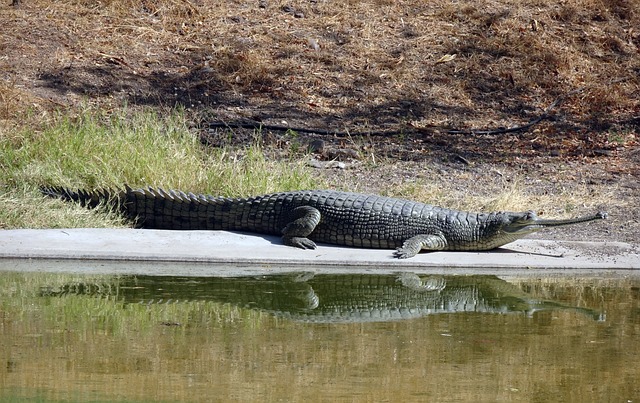Categories ▷

○ Crocodile
Crocodiles are large, carnivorous reptiles found in freshwater and saltwater habitats across the world's tropical regions. They have a distinctive long and narrow snout, sharp teeth, and a muscular tail that propels them through water with surprising speed. Crocodiles are apex predators and are known for their powerful bite and stealthy hunting tactics. They have a reputation for being dangerous to humans, and encounters with crocodiles can be fatal. Despite their fearsome reputation, crocodiles play an important role in their ecosystems, keeping populations of prey animals in check and contributing to nutrient cycling in aquatic habitats.

○ Alligator
Alligators are large, semi-aquatic reptiles that are native to the southeastern United States and China. They have a broad, rounded snout, and their teeth are hidden when their jaws are closed. Like crocodiles, alligators are apex predators and are capable of taking down large prey with their powerful jaws and sharp teeth. They are cold-blooded animals and regulate their body temperature by basking in the sun or seeking shade. Alligators play an important role in their ecosystems by maintaining the balance of prey populations and contributing to the nutrient cycling in their habitats. However, like crocodiles, they can be dangerous to humans, and caution should be exercised when in their presence.

○ Gharial
Gharials are a species of crocodilian that are found primarily in the rivers of India and Nepal. They are distinguishable from other crocodilians by their long, thin snout, which contains up to 110 sharp teeth. Gharials are uniquely adapted to their aquatic lifestyle and are highly specialized for catching fish, their primary prey. Their narrow snouts, long jaws, and razor-sharp teeth allow them to swiftly and efficiently capture fish in the water. Unfortunately, gharials are considered critically endangered due to habitat loss and hunting, and their populations continue to decline. Conservation efforts are underway to protect this unique species and ensure their survival for future generations.
